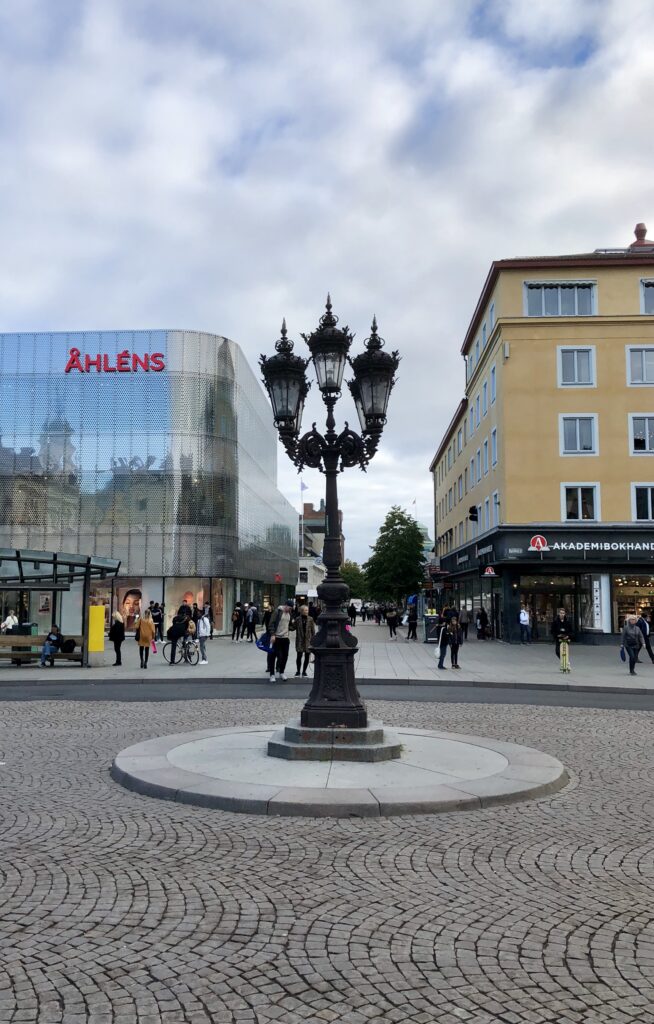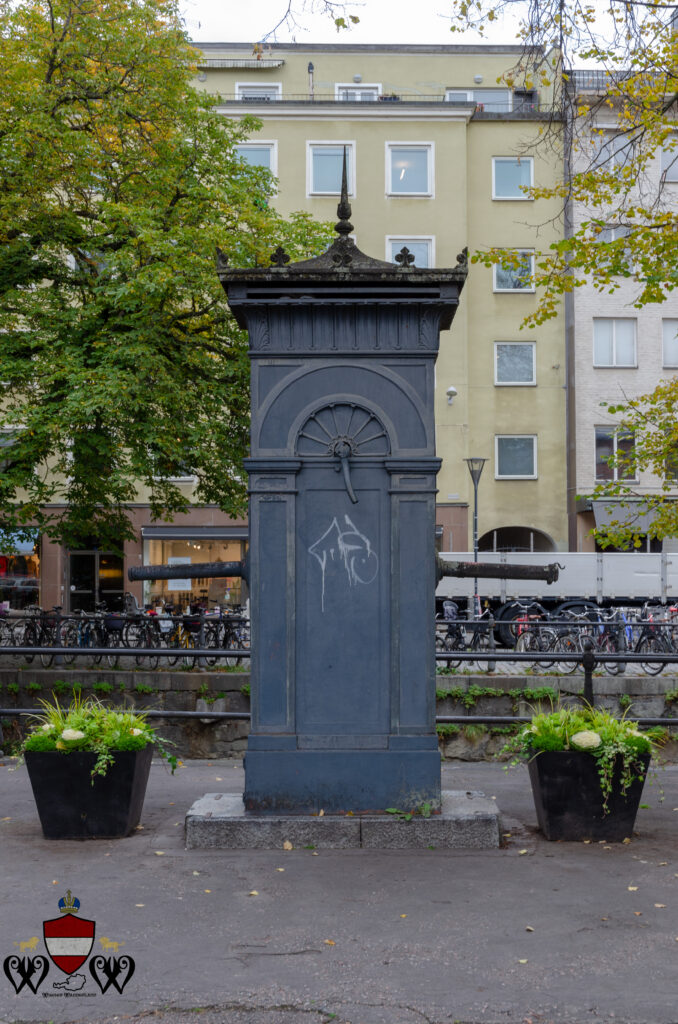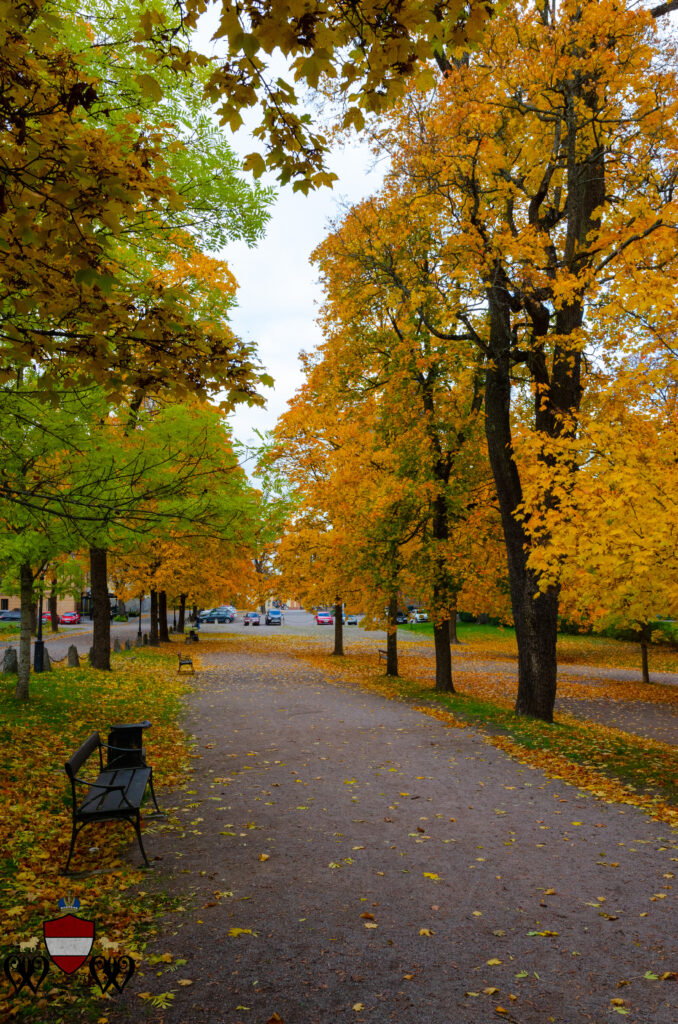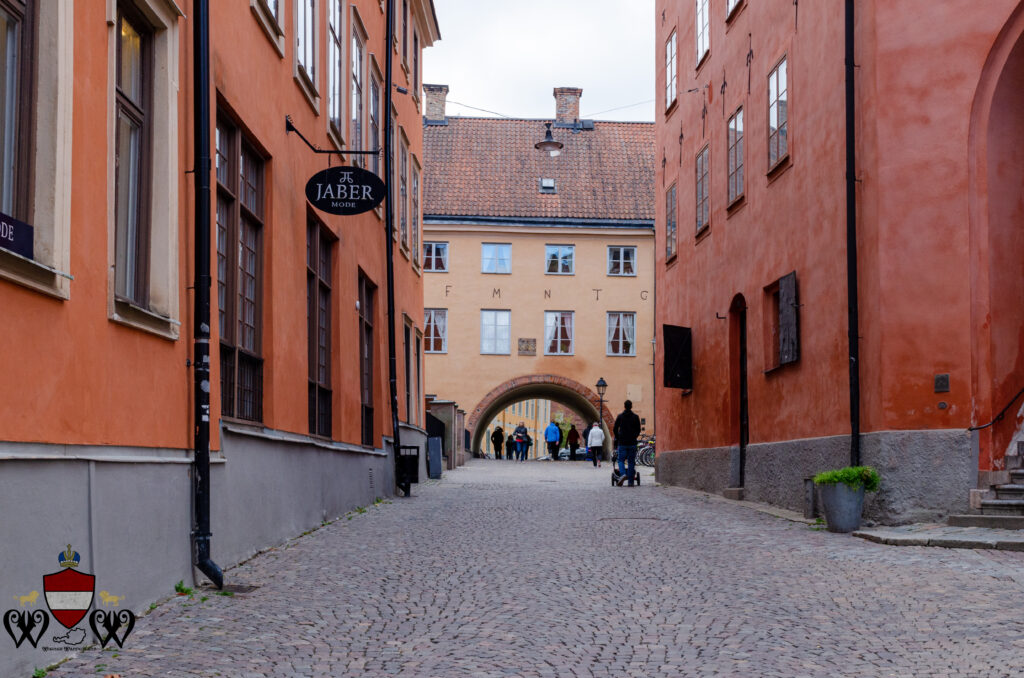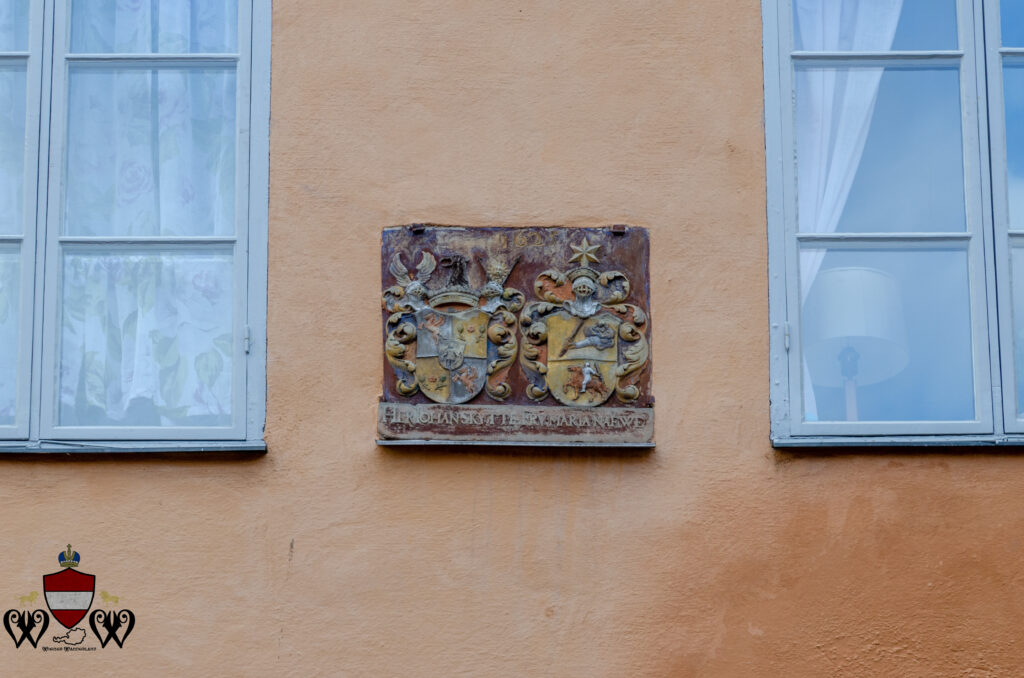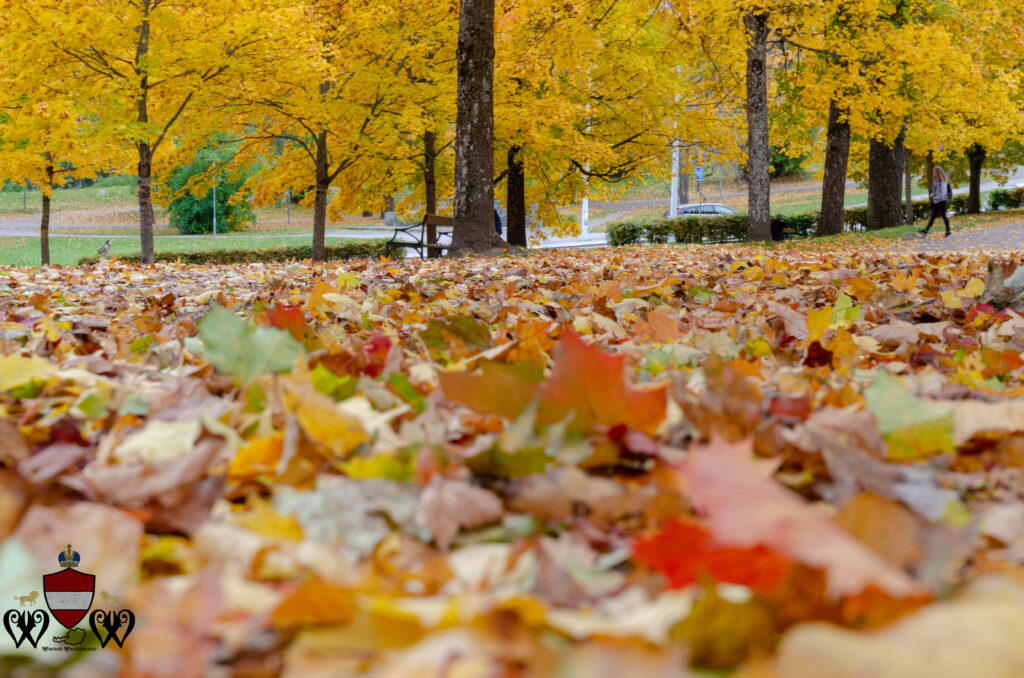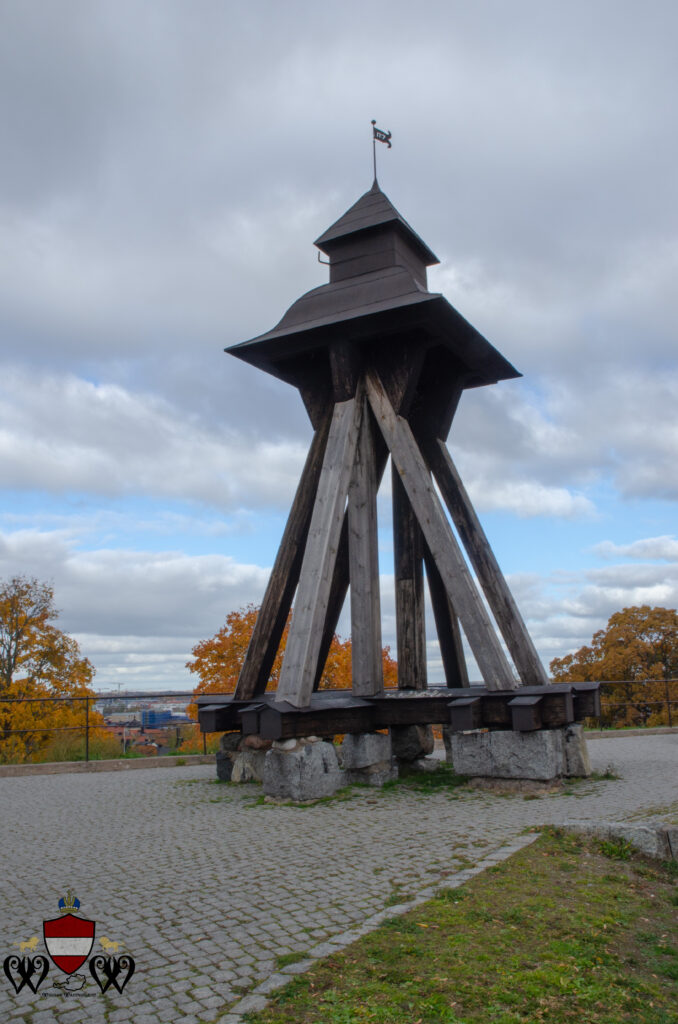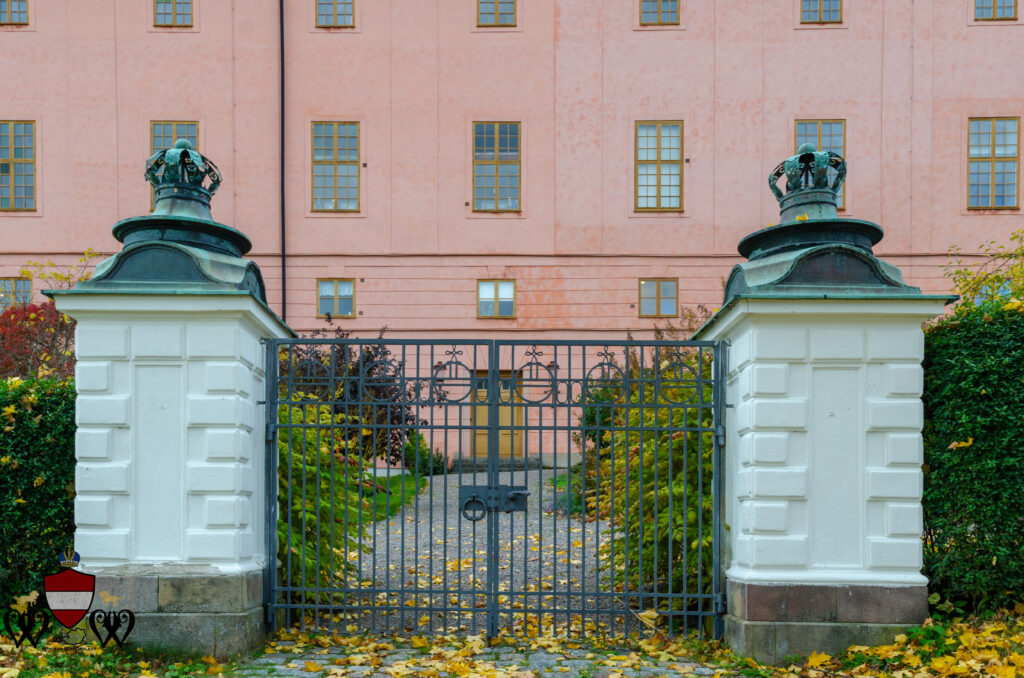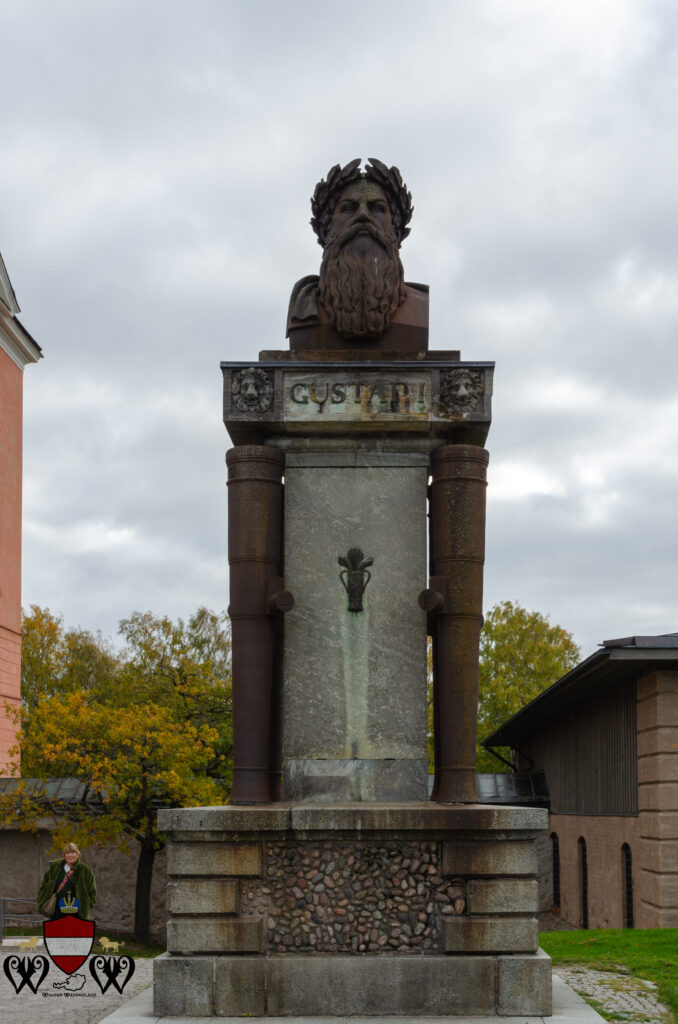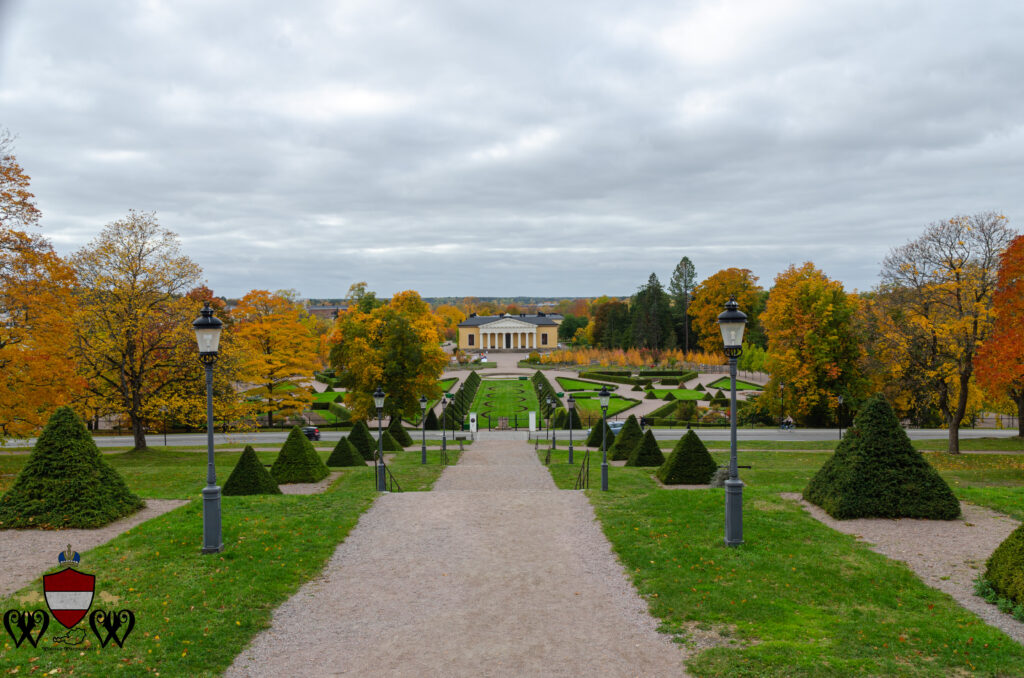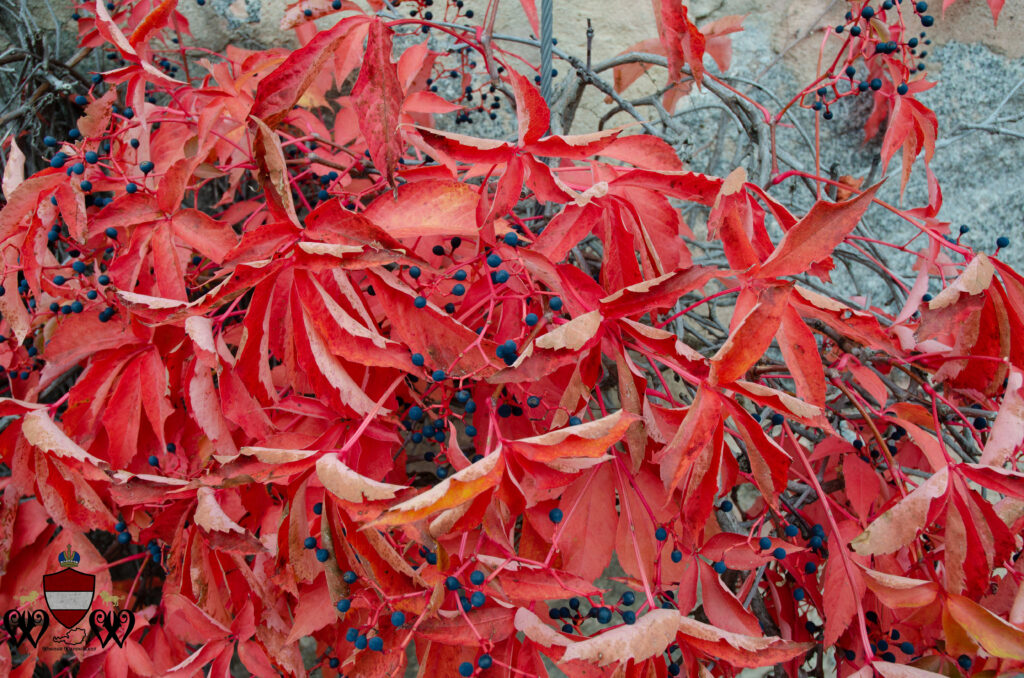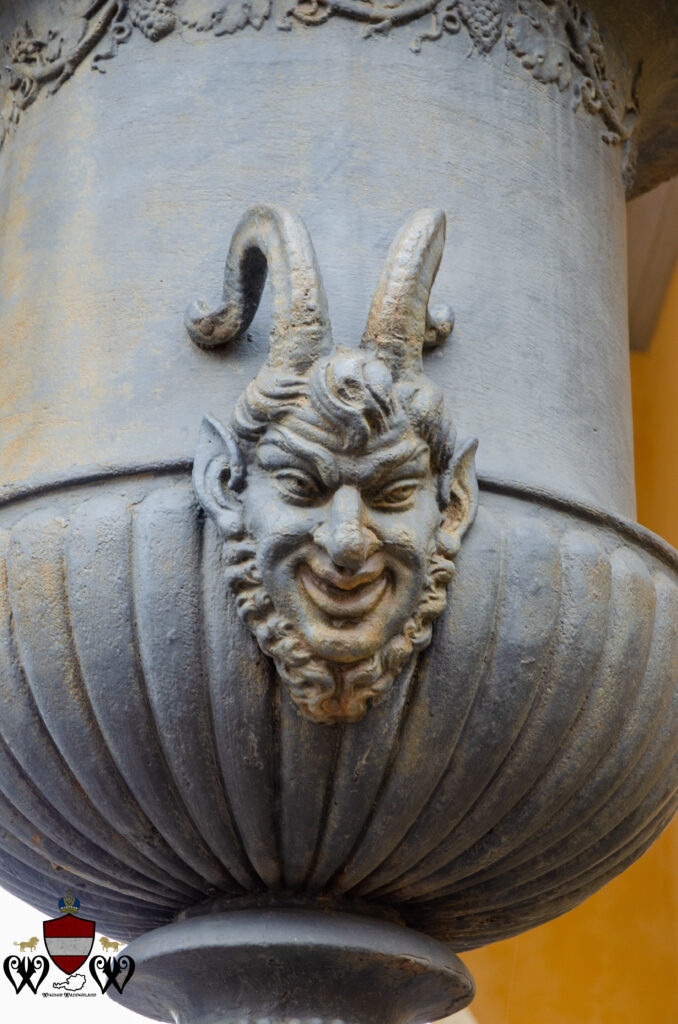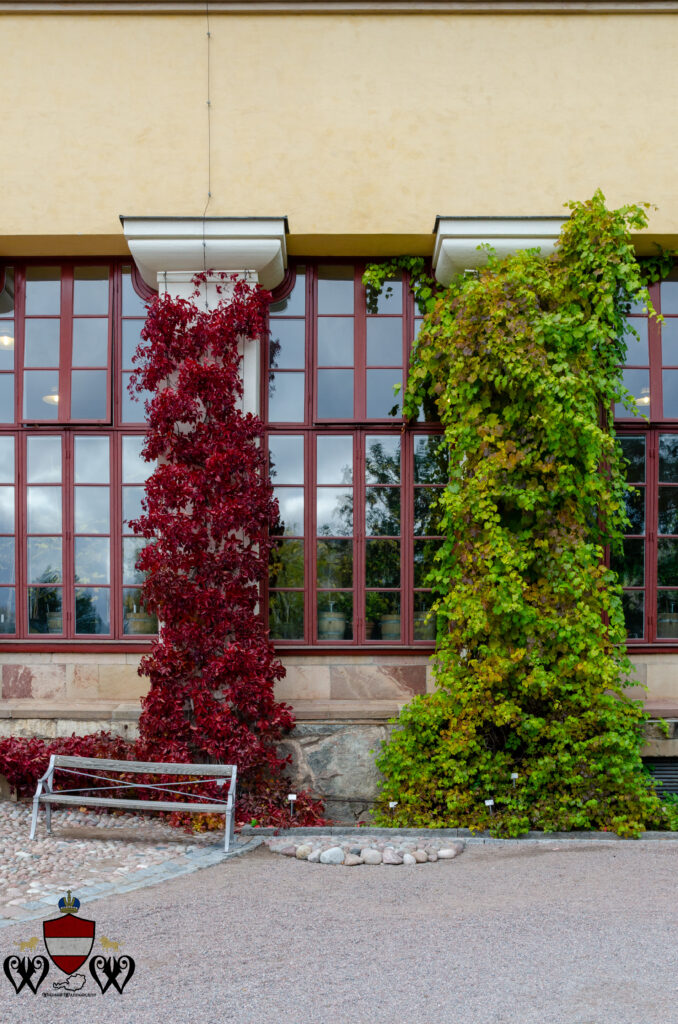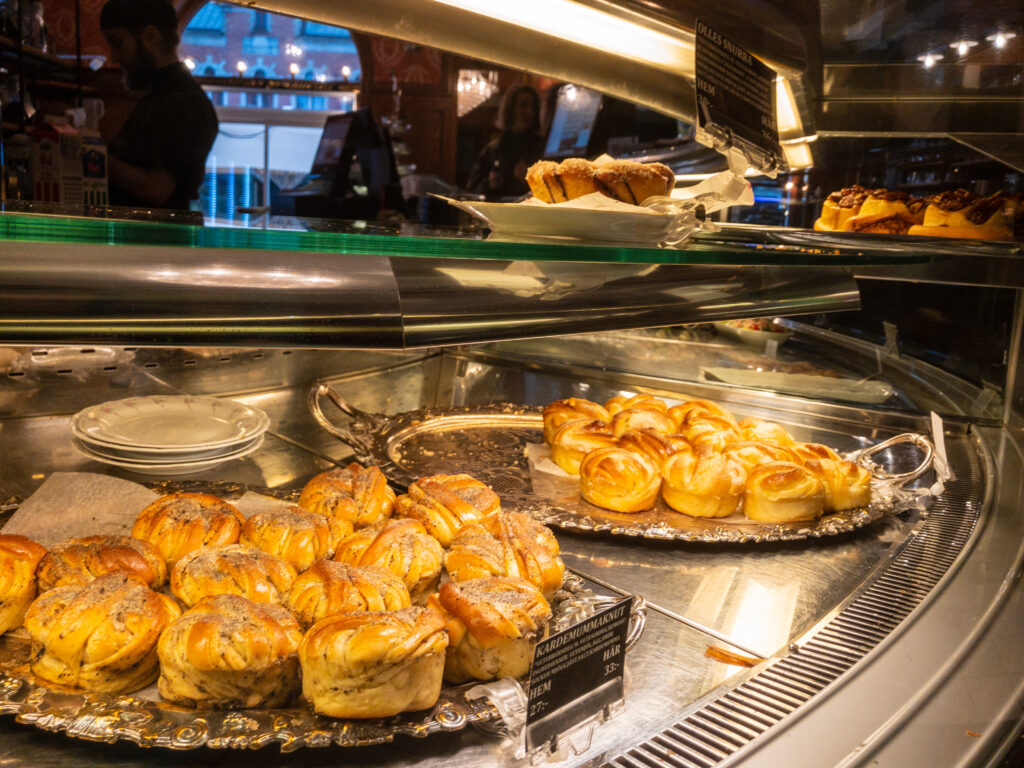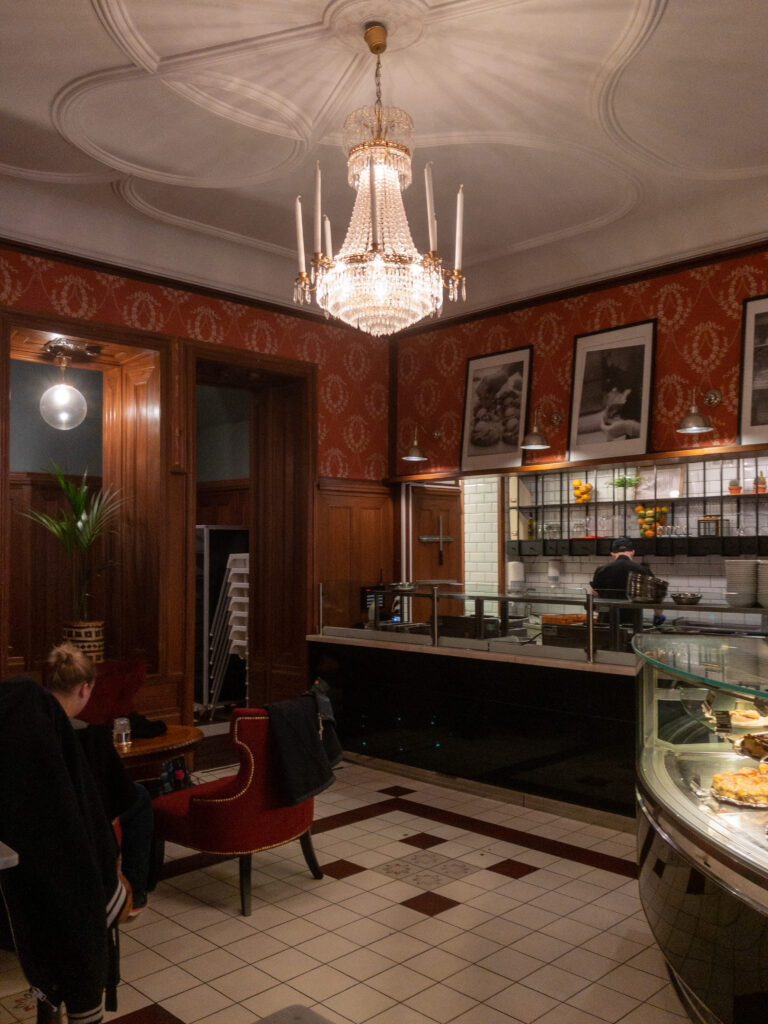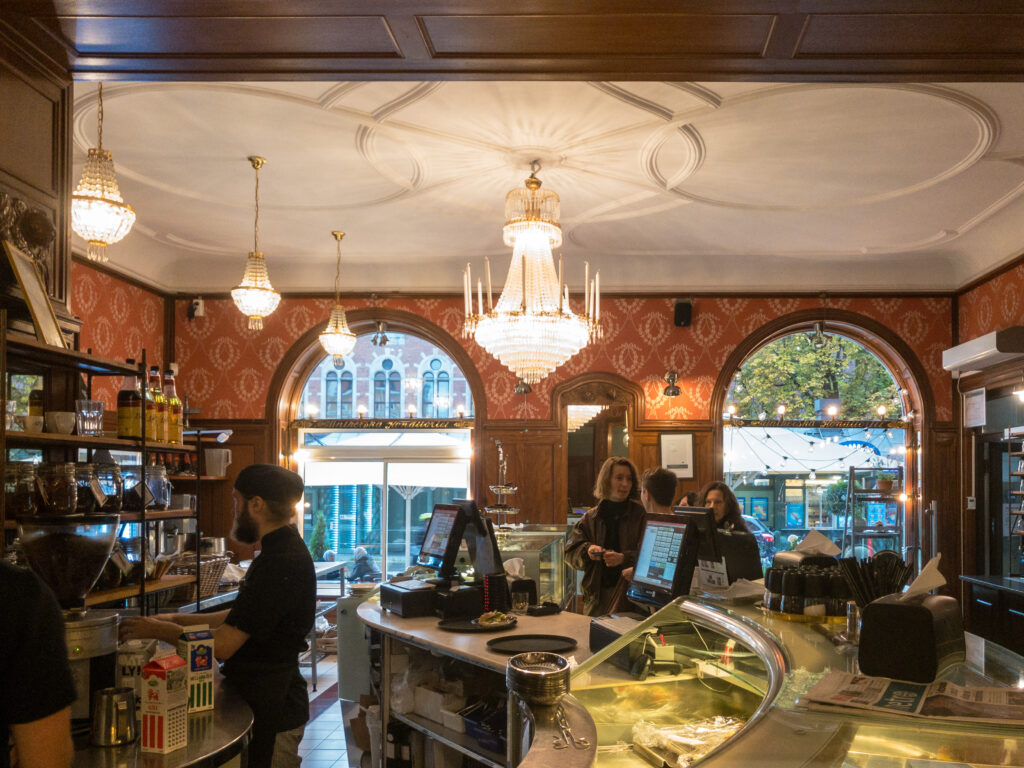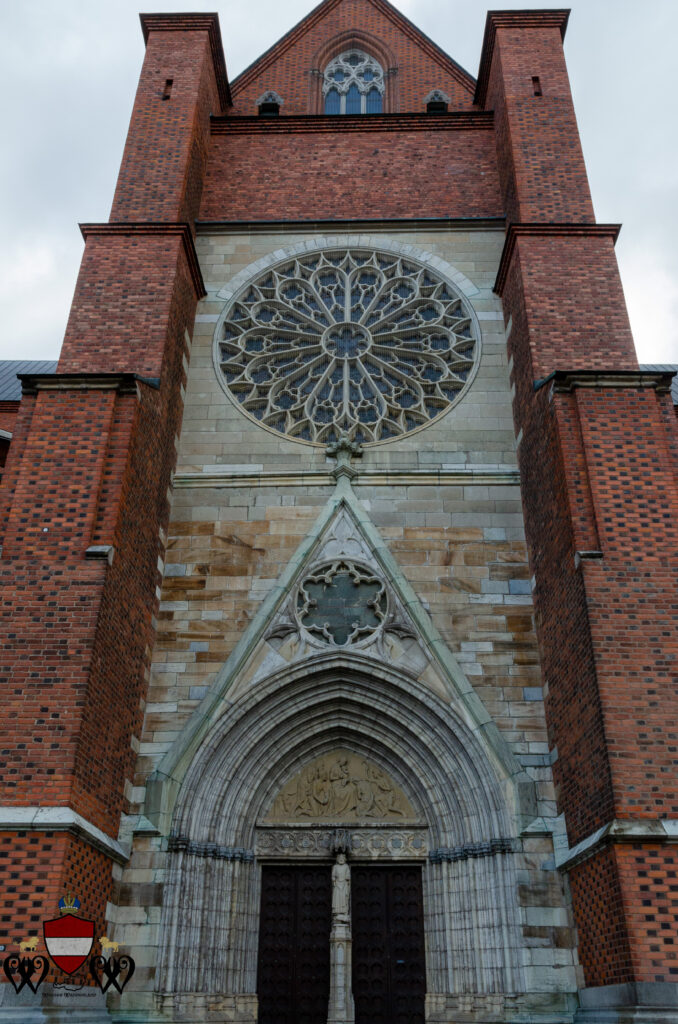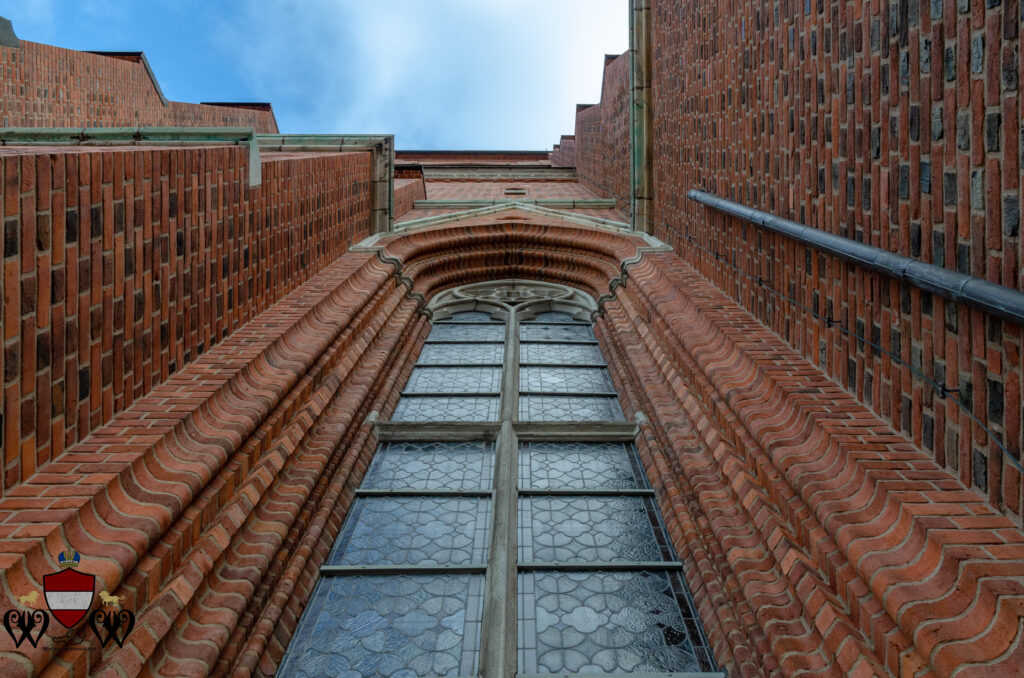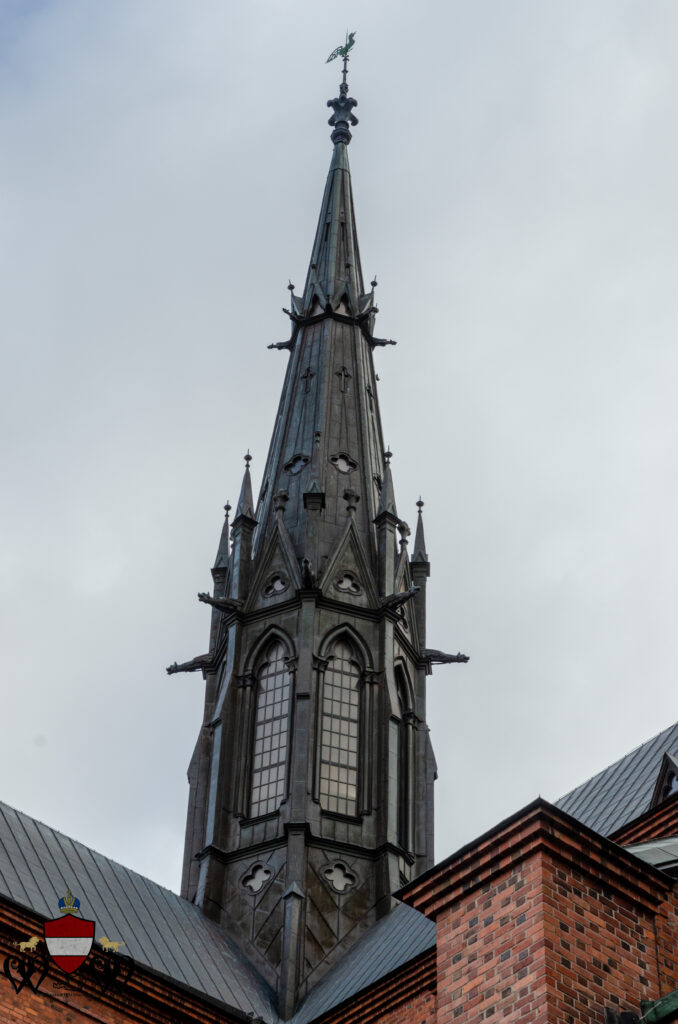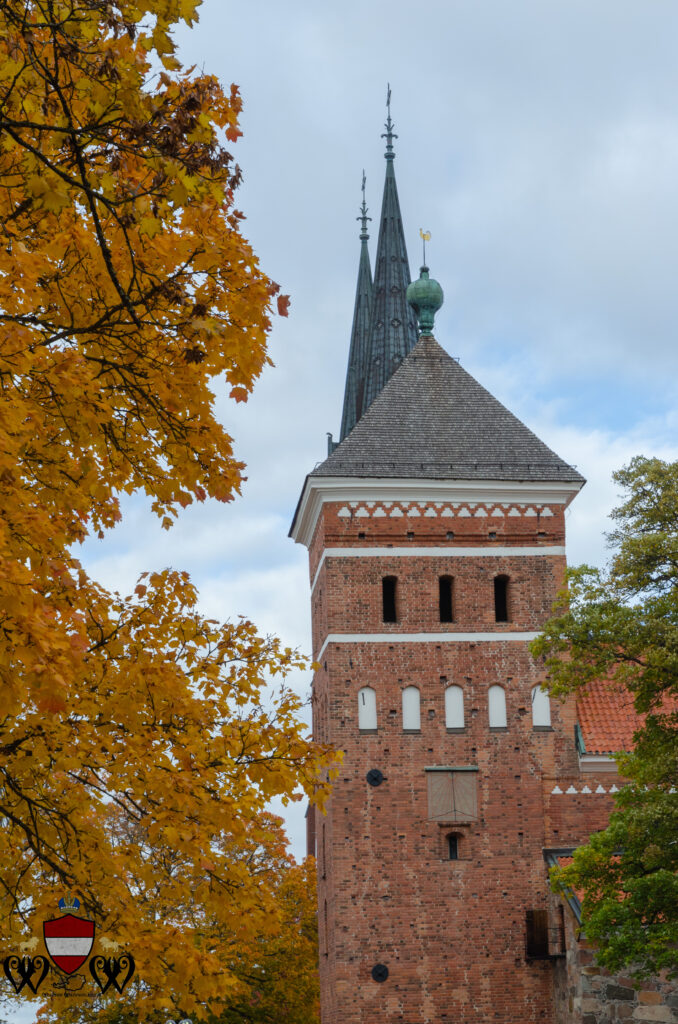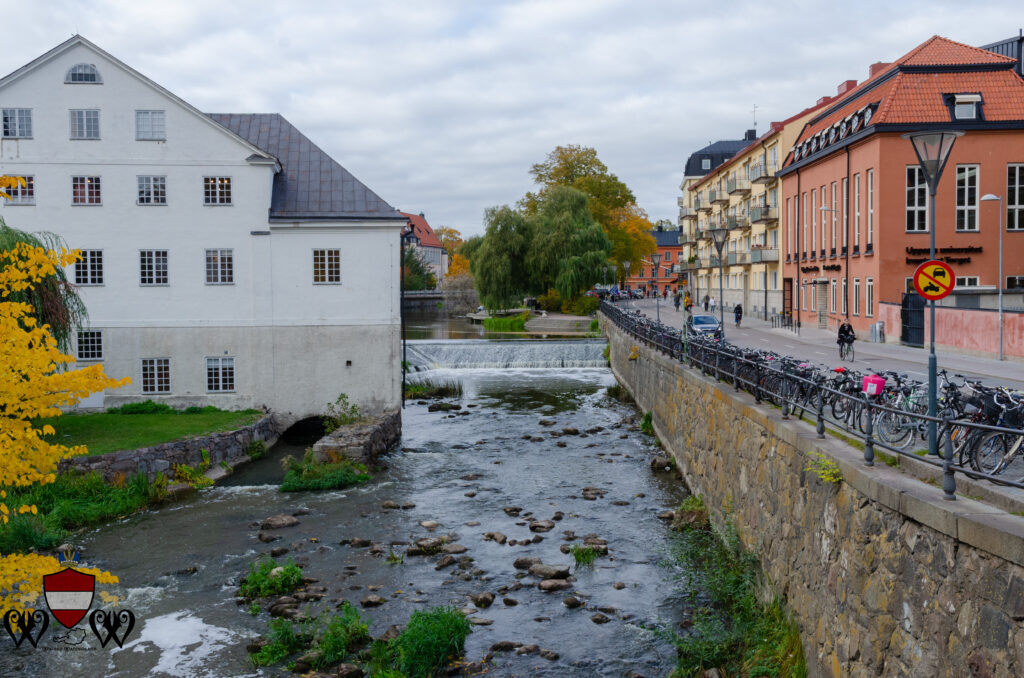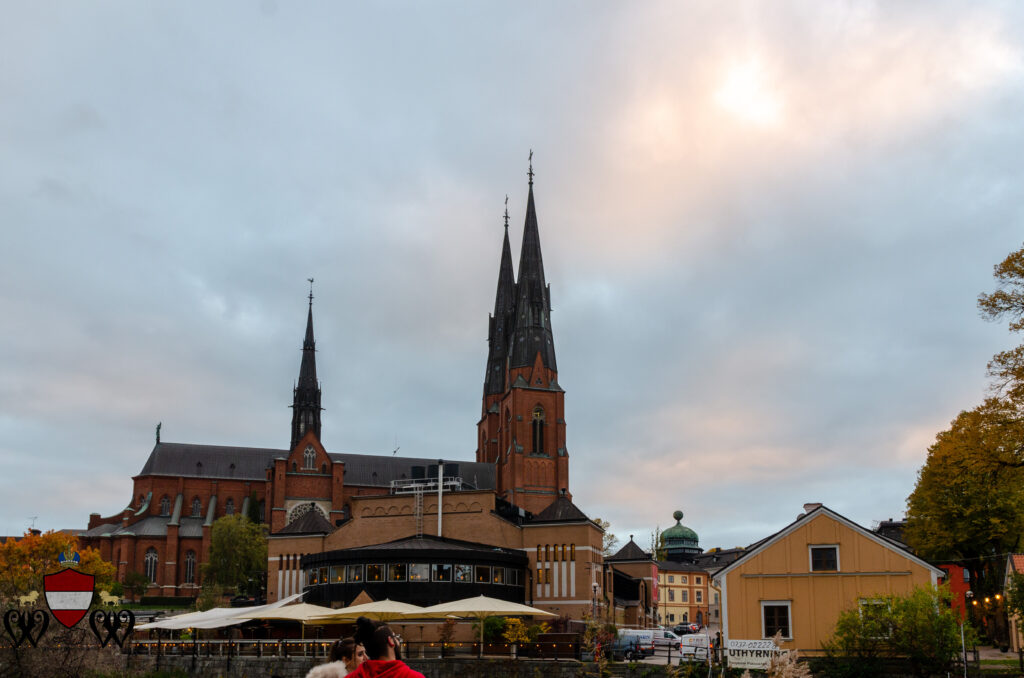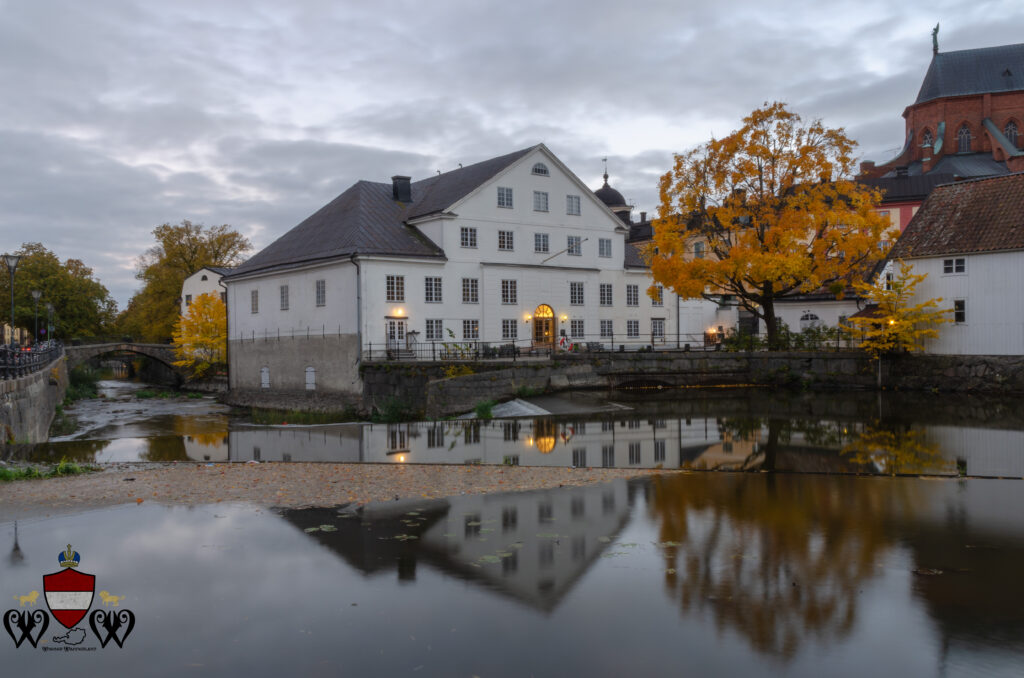Sweden is my ‘Goto’ destination when I want to unwind, relax, and recharge. I’ve been there many times, the last of which was back in Autumn 2018. While Stockholm does have its charms, good coffee, and the royal family who live in the city, it’s Uppsala that calls to me on almost every visit. A University city, Uppsala is a great place to relax, even on a cool autumn day.
Uppsala sits some 70km away from the Swedish capital. It’s home to around 177,000 people and is well connected to public transport by train and bus links. I arrived on the train from Knivsta, a small town I was staying at around 20 minutes away.
For an autumn day, it’s surprisingly warm and best of all, dry. I hope to make the most of it and head into the city. Now Uppsala has a history that can be traced all the way back to the 11th century, and further if you include the original Uppsala settlement. Old Uppsala sat a few kilometres to the north and was known as the centre of the Pagan religion in Sweden, that was until the Church arrived, designating the current Uppsala the Ecclesiastical centre for the country. Current Uppsala was built on the site of the port town of Gamla Uppsala. So there are lots to see.
I reach the river Fyrisån first. The river splits the city into two parts, with the University and Religious institutions on one side of the river, while the main shopping and entertaining districts are on the other. Not that it matters though, as the riverbank is incredibly pretty.
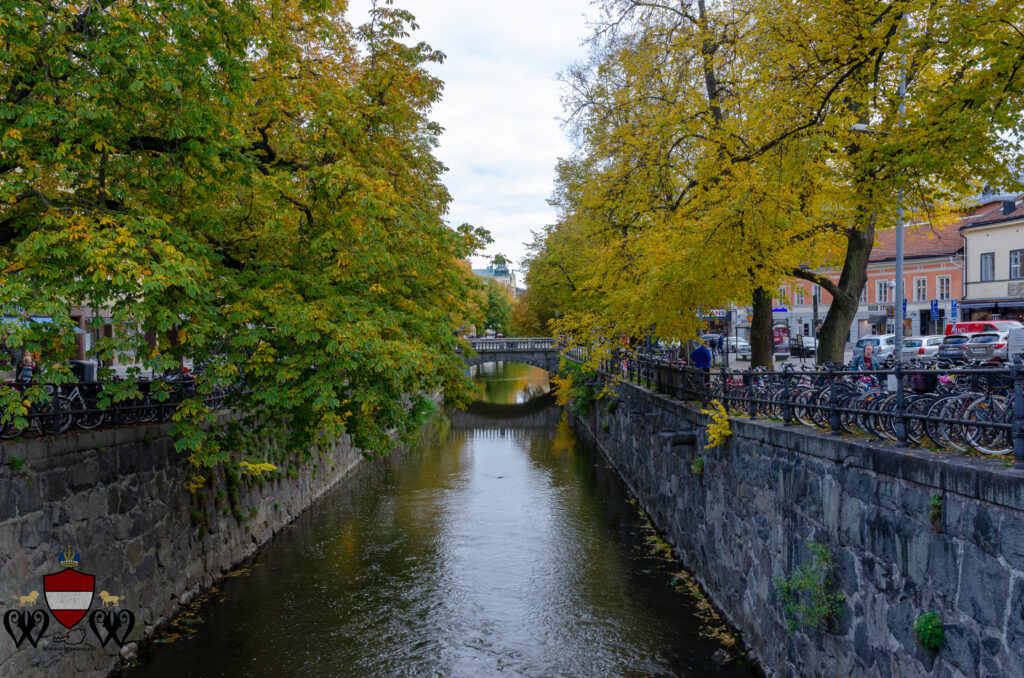
For now, I’ll stick to the retail and entertainment district. Also, I’m getting hungry, and when you’re in Sweden, there’s only one true choice for lunch. And no it’s not Meatballs.
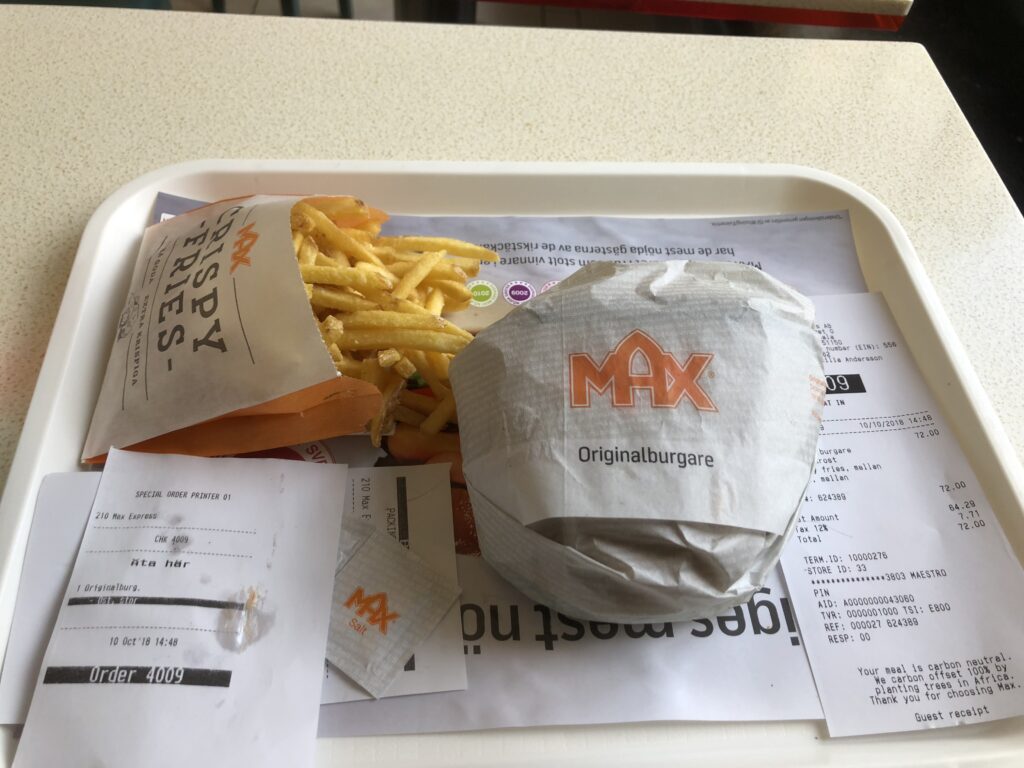
MAX Burger is a Swedish institution, and if you’ve ever eaten one, you’ll understand why McDonald’s are rare in Sweden. I can’t say enough great things about MAX. If Wiener Wanderland had an official Burger, it would be MAX Burgers.
From lunch, it’s time to hit up the city centre. The Centre actually fairly modern, and if I’m honest, a little dull. It has the charm of a 1960’s rebuild, with additions throughout the years that neither match nor improve things. That said, there are glimpses of old Uppsala around.
That said, finding old Uppsala is as simple as a short walk. Uppsala is compact and you can easily walk around the city within a few hours. Being a university city, however, bikes are everywhere.
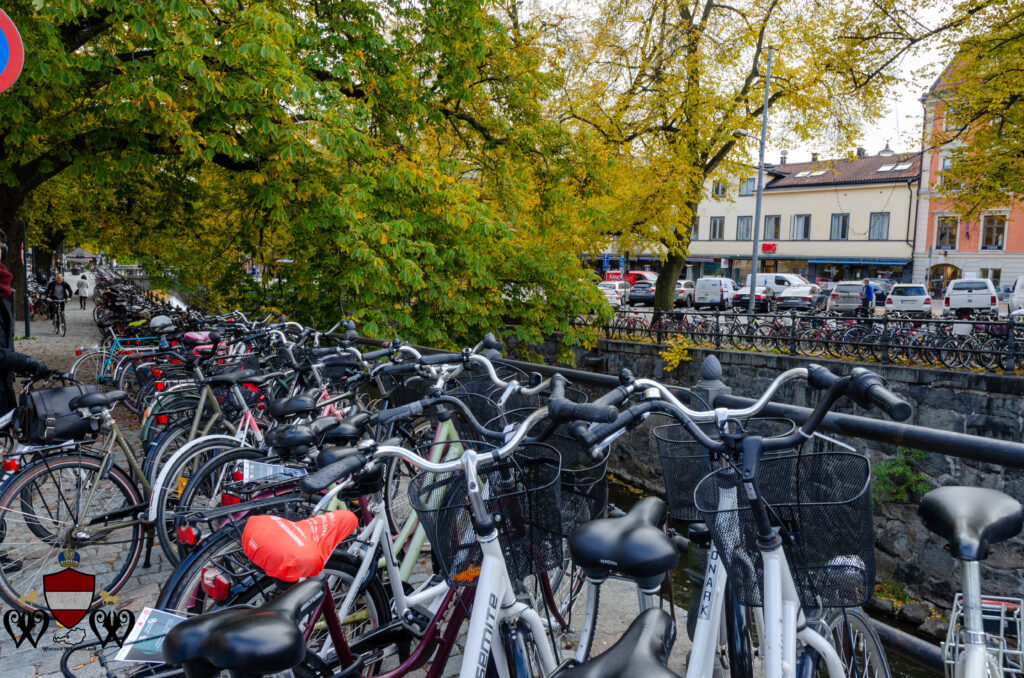
Just a five-minute stroll across the river, and I’m starting to see the old city. There are pretty little alleyways, arches that hint at adventure, and parks that offer you a place to just ‘Take it all it’. The city is a wonderfully relaxed place, and you’re encouraged to stop and watch the world go by, even in Autumn.
From an Autumnal park, I head uphill to visit a few of Uppsala’s sights. The first place I come across is the grand Carolina Rediviva, Uppsala Universities library. The university itself was founded in 1477 and is the oldest centre for higher learning in Scandinavia. That’s right, Norway, Sweden, Denmark and even Finland! The Carolina Redviva isn’t quite so old, being completed in 1841, a full 21 years from the first stone was laid. Great things take time it seems.
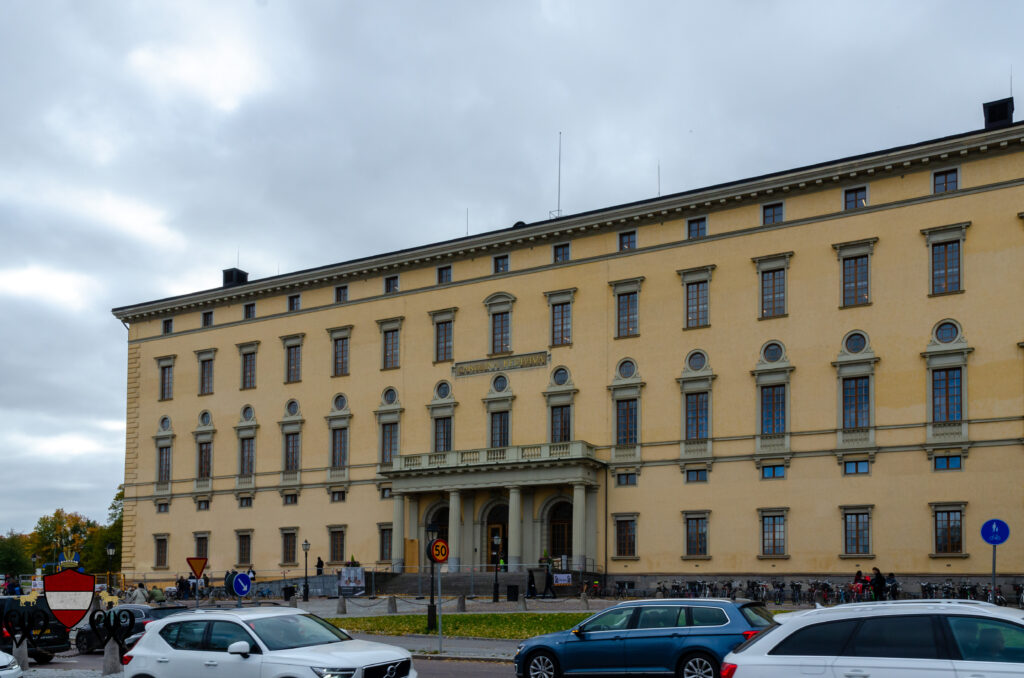
From the Library, it’s a short walk to the Uppsala Slott or Uppsala castle. Here history becomes both cruel and captivating. The castle was ordered to be constructed in 1549 by King Gustav I. The King had confiscated the Archbishop’s castle because he’d decided that the country should be more protestant, which caused a bit of a fight. The new Renaissance style castle would be constructed from the materials from the Archbishop’s castle. It seems the King really had it in the Archbishop. Incidentally, the Archbishop would get a new home in 1744. Personally, I think that the Archbishop had the last laugh. After 155 years, the new castle burned down in 1704, and its remains were used to provide materials for the new palace in Stockholm. I’m sure somewhere, the current Archbishop enjoyed a snigger. The Church doesn’t forget.
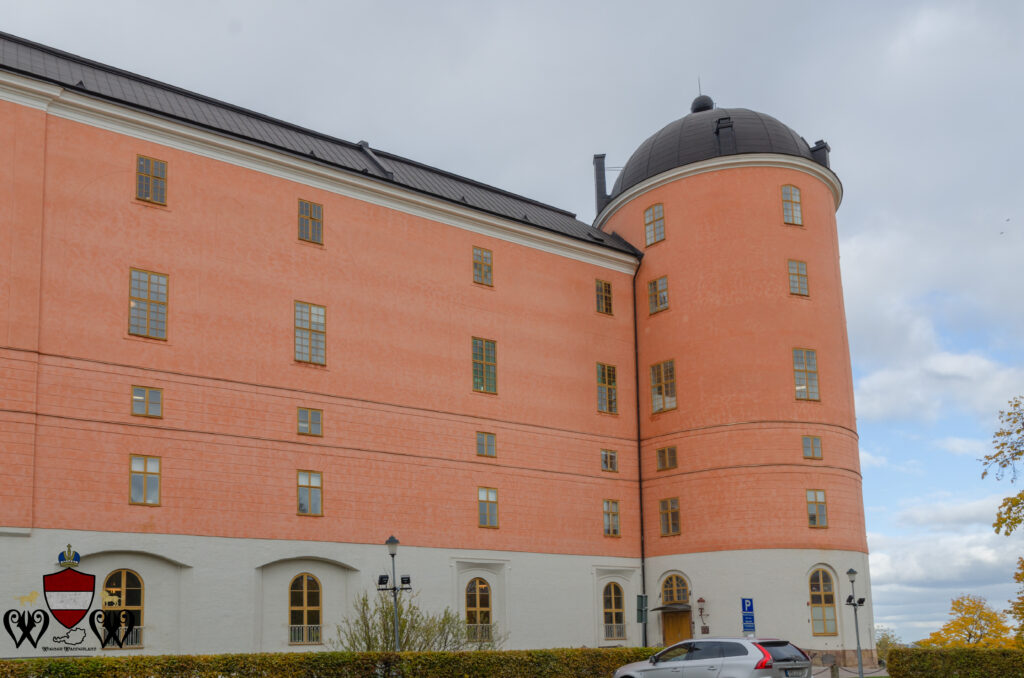
Reconstruction was slow, but today the fully restored castle sits high above the city, with a beautiful set of gardens to explore and a great view across the city. There are also lots of cannons, a huge tower-like structure that holds the original bell from the castle, and, during the summer, three museums and a cafe bar to enjoy. In mid-October, well it’s all quiet.
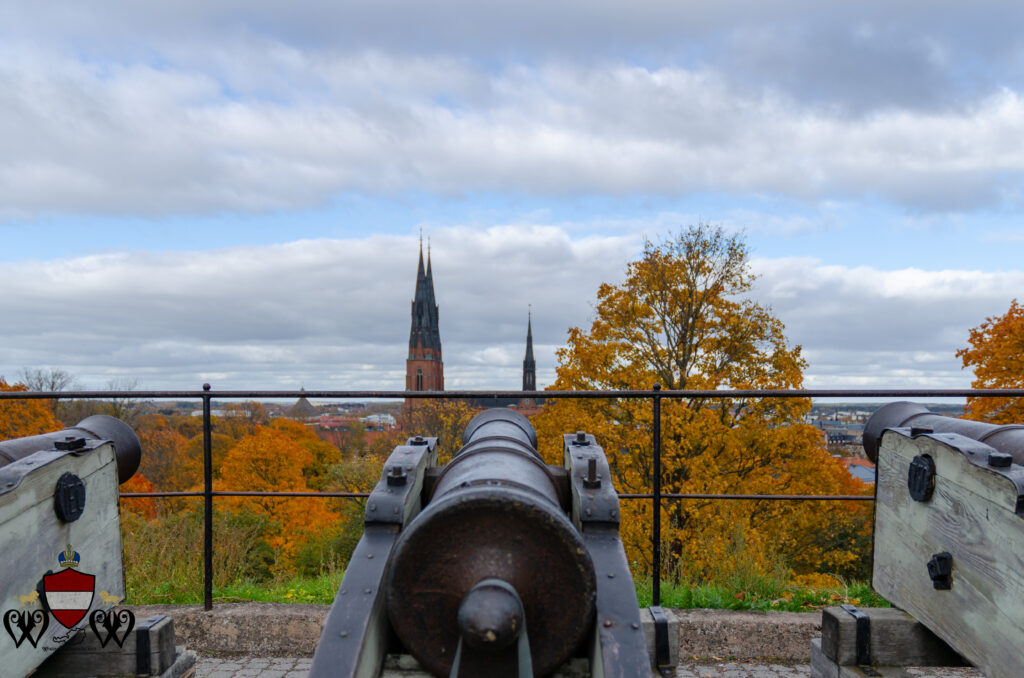
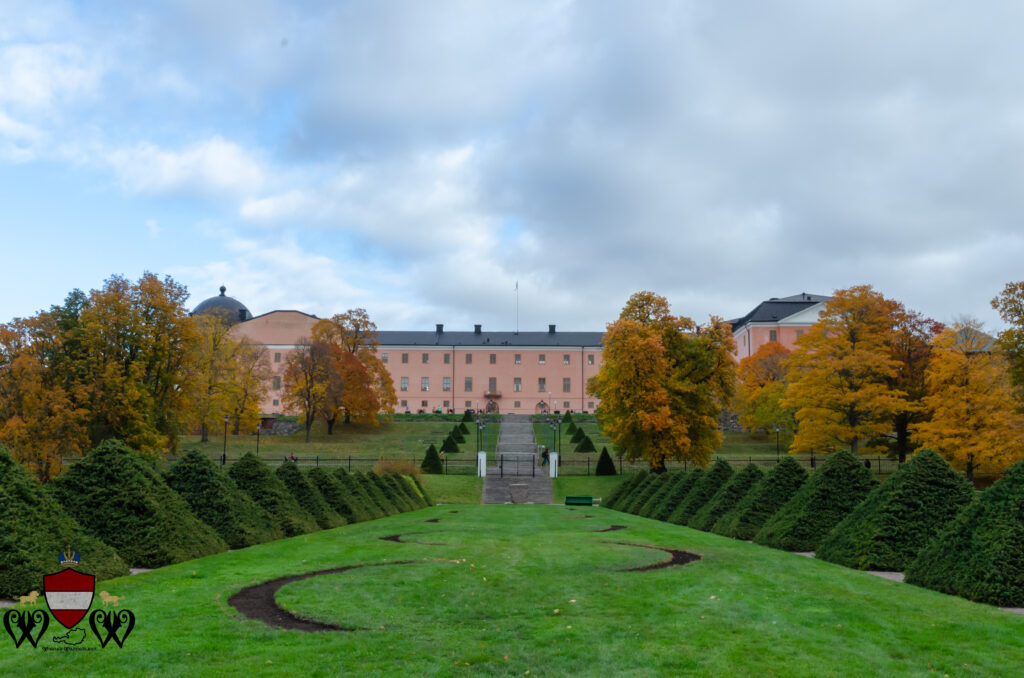
The Castle gardens lead me down a series of steps to a beautiful large garden and to the Linneanum building. The building is very, well, interesting. The front of the impressive facade is classic Grecian style. Marble columns stretch to a typical ‘Parthenon’ style roof. Set against the gardens, the whole scene wouldn’t look out of place here in Vienna. heading around the corner though and things change.
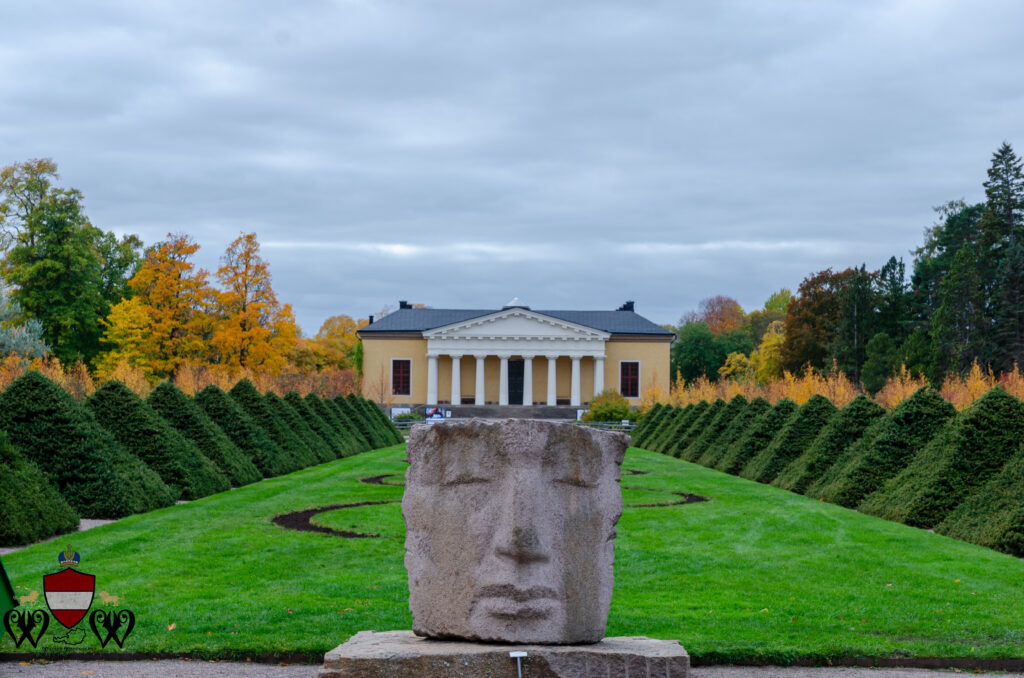
The Linneanum is home to the Orangery. What is an Orangery? It’s basically a posh conservatory that was popular with the well to do and various Royals throughout Europe between the 17th and 19th Century. We have one at Schonbrunn. The term orangery was used to describe the buildings because exotic and citrus fruits trees could be protected in winter. In Sweden, the Orangery would certainly be needed. The building style here is much more European, but amongst the autumn leaves, the whole thing feels like a great place to still for a while.
I find that my energy is waning and a small grumbling in my stomach, which can only mean one thing. It’s time for some Fika. Fika is a wonderful part of the day, introduced to me by my wonderful Swedish friends. Fika is snack time, usually a coffee and a little slice of cake, cinnamon bun, or if you’re very lucky, and the time of year is just right a Semla bun. The latter is only available at Easter and just one will shorten your life by 30 minutes! I may not be from Austria originally, but I am Viennese to a certain extent, and that means, I need a coffee shop. Fortunately, Uppsala can provide a great coffee in an ambience that any hardened Viennese coffee drinker will recognise.
Café Årummet sits next to the River and offers strong Swedish coffee (It doesn’t come any other way!) and a choice of sweet Fika items. In the summer there’s a spot to sit outside, but today I’ll be indoors for a little warmth. The decor is very familiar, though there are no grumpy waiters to serve you. Instead, you head to the counter and order from there.
With my appetite sated, I head back out for my final destination on today’s wander. The Cathedral. The beautiful Gothic Cathedral is home to the Archbishop of the Church of Sweden, the resting place of King Eric IX, Who died in battle outside the original church in 1160, and later on, was granted Sainthood by the Catholic Church, and is the Patron saint of the Nation. Several Swedish Kings held their coronations here, and several more are entombed within their own private chapels. The whole Catherdral is visible no matter where you stand in the city, but it’s when get up close to the structure that you can fully appreciate its size.
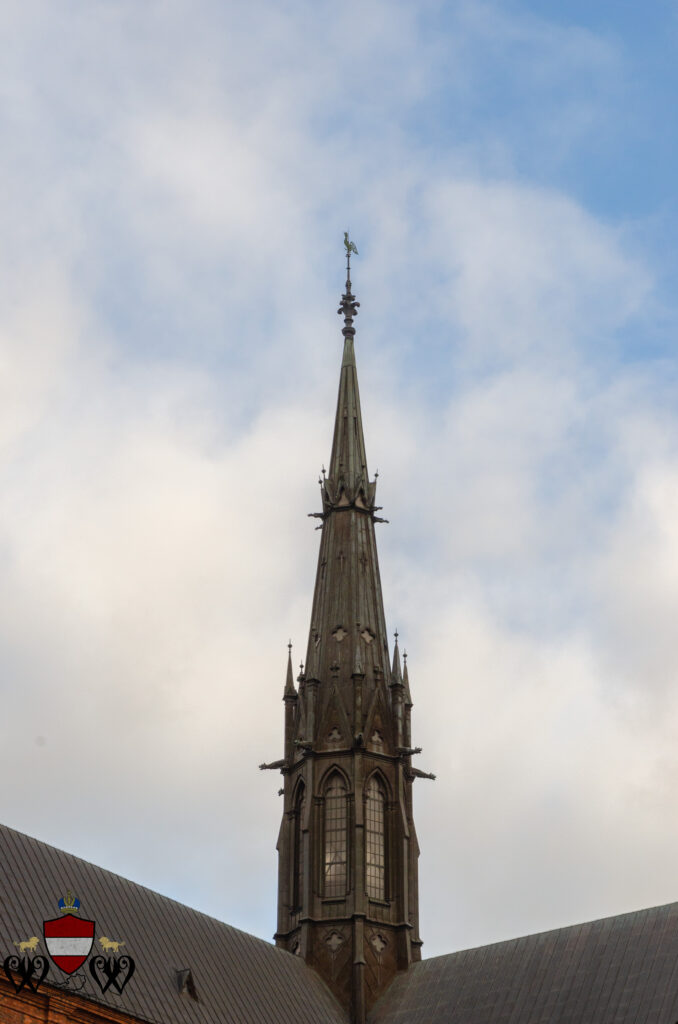
The most interesting feature I felt was the all brick construction. Normally cathedrals are palaces of marble and stone. The brick construction looks odd compared to what you’d expect. Nonetheless, the details are astounding.
For the last hour or so of my day, I take up residence on the river bank, aiming to capture the Catherdral at blue hour. The air is getting a little chilly, but, I have a great view as I wait for the sun to set.
Soon enough the hour comes and I get the shot I’ve been waiting for.
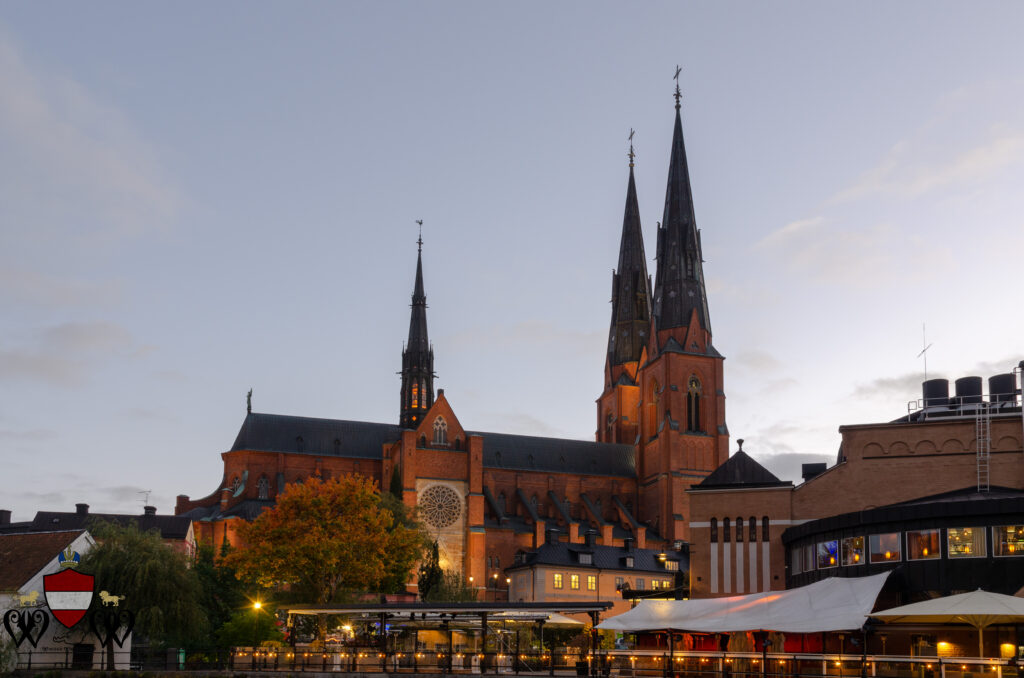
With the shot taken, It’s time to head home and a nice cup of tea. Uppsala is such a beautiful city, and I really can’t wait to get back there. The City is known as Sweden’s Cambridge by some, but that does a disservice to Uppsala. If you’re looking for a city where you can relax with a coffee along the riverside, a delicious bit of Fika to brighten a day, a historic past that’s captivating, or just somewhere to watch the world go by, Then Uppsala is for you.
Getting There.
Trains run regularly from Stockholm to Uppsala. Journey times vary from just over 30 minutes to nearly 60, with prices starting from 75SEK ((Around €7.50) to 126SEK (Around €12.50) With SJ RailSomething to be aware of is that there competing companies run on this route, and tickets are not interchangeable. Best to stick to SJ who is the main train operator in Sweden.
Stockholm Arlanda is Sweden’s main airport and sits just 30 or so kilometres from Uppsala. Buses and rail connections can be made from Arlanda to Uppsala.
Further Reading.
If you’d like to know more about Uppsala and the various places I visited, check out the links below.
https://destinationuppsala.se/en/ – Tourist Information Uppsala.
http://www.uppsalaslott.com/en/ – Uppsala Castle
https://www.svenskakyrkan.se/uppsala/welcome-to-uppsala-cathedral – Uppsala Catherdral (Transaltions available)
https://www.botan.uu.se/our-gardens/the-botanical-garden/explore/linneanum—the-orangery/ – The Linneanum and The Orangery
https://ub.uu.se/our-locations/carolinabiblioteket/ – The University Library.

